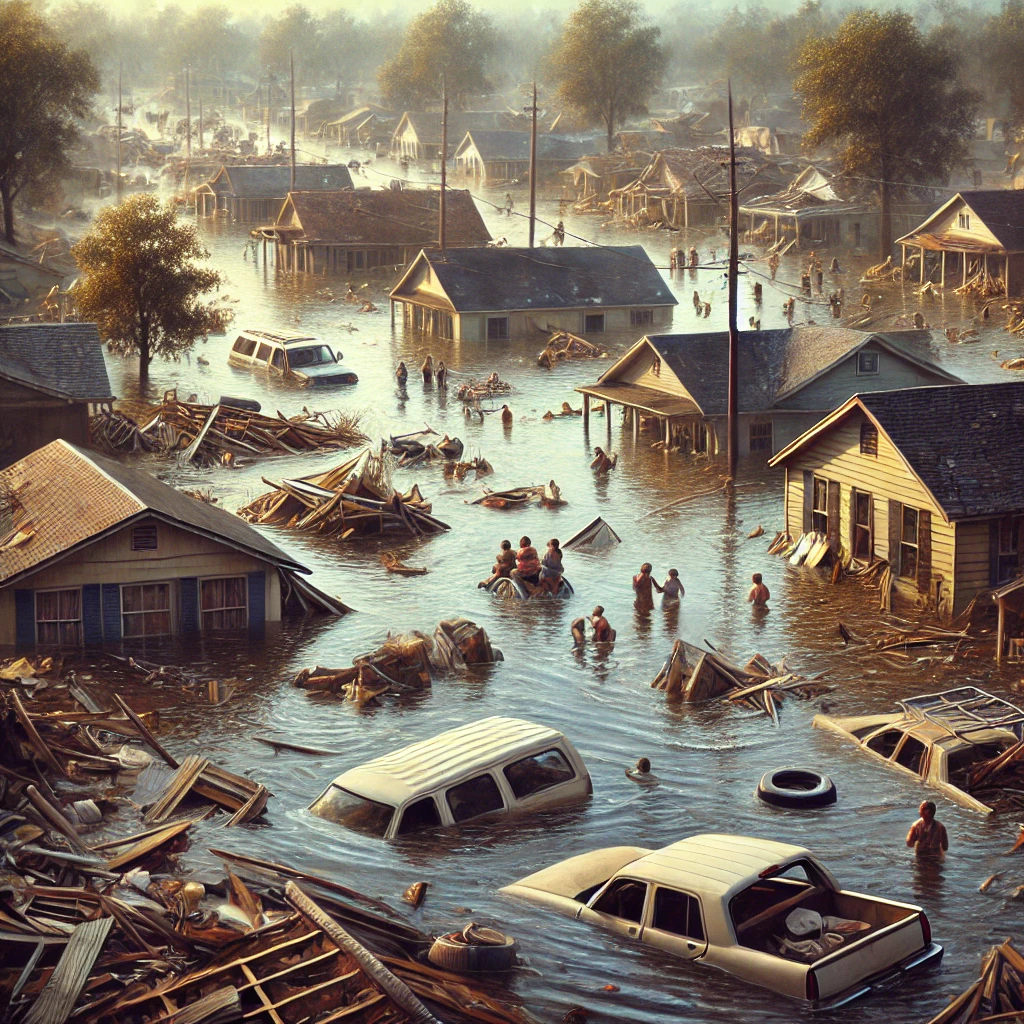On August 29, 2005, Hurricane Katrina made landfall on the Gulf Coast of the United States, leaving a trail of devastation and marking one of the most catastrophic natural disasters in U.S. history. The hurricane, which had strengthened into a Category 3 storm by the time it hit land, caused widespread damage, flooding, and loss of life across several states, particularly in New Orleans, Louisiana.
Hurricane Katrina began as a tropical depression over the Bahamas on August 23, 2005. It rapidly intensified into a powerful hurricane as it moved through the Gulf of Mexico. By the time it reached the Gulf Coast, it had become a massive storm with winds exceeding 125 miles per hour. The storm surge, combined with heavy rains, led to catastrophic flooding, particularly in New Orleans, where levees and floodwalls failed to hold back the waters.

The Impact on New Orleans
The impact of Hurricane Katrina on New Orleans was particularly devastating. The city, which is situated below sea level and protected by a system of levees and pumps, was overwhelmed by the floodwaters that surged into the area after the levees breached. Entire neighborhoods were submerged, and residents were forced to seek refuge on rooftops or in the attics of their homes. The flooding led to significant loss of life, with estimates ranging from several hundred to over a thousand fatalities directly related to the storm and its aftermath.
The disaster exposed serious deficiencies in emergency management and response systems at both the local and federal levels. The slow and inadequate response to the crisis drew widespread criticism and highlighted the need for improved disaster preparedness and response strategies. The scenes of devastation and suffering broadcast across the media brought the plight of the affected communities into the spotlight and spurred calls for reform and support.

Long-Term Consequences and Recovery Efforts
The long-term consequences of Hurricane Katrina were profound and far-reaching. The storm caused billions of dollars in damages, with significant impacts on infrastructure, housing, and local economies. The recovery and rebuilding process was lengthy and complex, involving a combination of federal, state, and local efforts. The Federal Emergency Management Agency (FEMA) and other organizations were mobilized to provide aid and support, but the recovery was hampered by logistical challenges and resource constraints.
The hurricane also highlighted broader issues of inequality and vulnerability, particularly among marginalized communities. Many residents who were disproportionately affected by the storm faced additional challenges in accessing resources and rebuilding their lives. The disaster prompted discussions about social justice, environmental policy, and the need for comprehensive disaster preparedness and resilience planning.

Hurricane Katrina’s impact on August 29, 2005, remains a defining moment in U.S. history, serving as a stark reminder of the power of natural disasters and the importance of effective response and recovery systems. The event continues to influence disaster management policies and urban planning, and the lessons learned from Katrina are applied to improve preparedness and resilience in the face of future emergencies.
